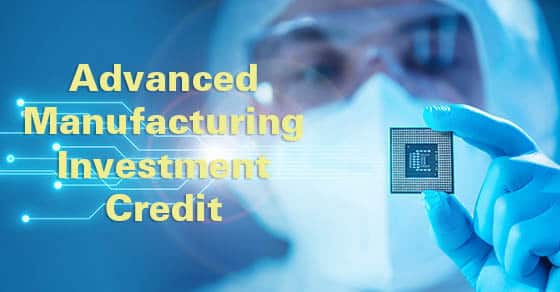The Creating Helpful Incentives to Produce Semiconductors (CHIPS) for America Act — signed into law in 2022 — provides generous tax incentives to increase domestic production of semiconductors, also known as chips. More specifically, the CHIPS Act created a temporary Advanced Manufacturing Investment Credit for investments in semiconductor manufacturing property. The IRS recently issued final regulations, including some changes related to the election to treat the credit as a federal tax payment.
Credit overview
Codified in Section 48D of the Internal Revenue Code, the credit generally equals 25% of the qualified investment related to an advanced manufacturing facility — that is, a facility with the primary purpose of manufacturing semiconductors or semiconductor manufacturing equipment. A manufacturer’s qualified investment equals its basis in any qualified property placed in service during the taxable year.
For pass-through entities, such as partnerships or S corporations, the qualified investment is calculated based on the partner’s or shareholder’s pro rata basis in the property. Accordingly, manufacturing partnerships and S corporations with qualifying property may pass through a portion of the qualified basis to taxpayers who can then claim a credit (subject to any limits at the partner or shareholder level).
Qualified property is tangible property that:
- Qualifies for depreciation or amortization,
- Is constructed, reconstructed or erected by the taxpayer or acquired by the taxpayer if the original use of the property begins with the taxpayer, and
- Is integral to the operation of the advanced manufacturing facility.
It also can include a building, a portion of a building (other than a portion used for functions unrelated to manufacturing, such as administrative services) and certain structural components of a building.
Claiming the credit
A manufacturer can claim the Sec. 48D credit for qualified property placed in service after December 31, 2022, for which construction begins before January 1, 2027. If construction began before the CHIPS Act was enacted, though, only the portion of the basis attributable to construction begun after enactment is eligible.
Generally, the credit is claimed in the tax year that the qualified property is placed in service for federal tax purposes. Therefore, the property must be ready and available for its assigned function. For example, if a manufacturer begins construction related to qualified property in 2024 but doesn’t place it in service until 2025, the credit is claimed on the company’s 2025 federal tax return.
However, applicable entities can choose to make a “direct pay” election to treat the credit as a payment against their federal income tax liability. First, this direct payment will offset any tax liability of the entity and then any excess is refundable.
Final regs: 3 areas of focus
The final regs modify certain provisions in the proposed regs and provide an interim rule for determining a partner’s distributive share of the tax-exempt income. The final regs are effective and applicable as of April 22, 2024.
Here are three specific areas the final regs focus on:
1. Direct-pay election. Prior to the final regs, there was confusion as to the timing of the direct-pay election option for the Sec. 48D credit. Specifically, under the proposed regs, it wasn’t clear if a manufacturer should be treated as having made the election upon completing the registration requirements established by the IRS.
The final regs clarify that each qualified investment must have its own registration number. However, the election is made on the manufacturer’s tax return. A caveat: This election is irrevocable.
2. Double benefit rule. The IRS and the U.S. Department of Treasury expressed concerns that entities may derive duplicate benefits for expenditures. Thus, the regulations feature several provisions designed to deny double tax benefits for the same expenses, including correlation with the general business credit. Accordingly, the final regs include a comprehensive five-step process to be used to determine the allowable credit amount that may be elected. These complex issues are best left to your tax advisor.
3. Pass-through entities. The final regs provide more flexibility for pass-through entities. In recognition of previous agreements regarding the allocation of tax-exempt income, the final regs include an interim rule for a written binding partnership agreement entered into after December 31, 2021, and before June 22, 2023, if the partnership was formed for the purpose of owning and operating an advanced manufacturing facility or qualified property. Under the interim rule, a partner’s distributive share of the direct payment is determined based on more favorable allocation rules.
Have questions?
The IRS’s final regs provide some needed clarity regarding the Sec. 48D credit for manufacturers under the CHIPS Act. If you have questions regarding the Sec. 48D credit, contact us.
© 2024




